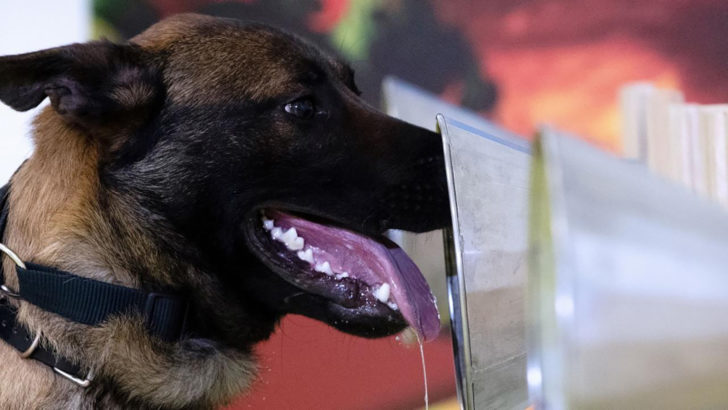Does the sweat of a person infected with COVID-19 have a unique odor? Researchers in France and elsewhere believe so and we now know that dogs can smell it thanks to a study from the National Veterinary School of Alfort, near Paris.
Sniffer dogs.
A new study carried out by researchers from the National Veterinary School of Alfort, in the Parisian suburbs, allowed 8 Belgian Malinois shepherds to identify the smell of COVID-19 in the sweat of infected people. The overall success rate of the dogs was almost perfect, with an average of 95% of samples correctly « sniffed ». Four dogs were able to identify a COVID-positive sweat sample 100% of the time.

Many of the countries that have been most successful in maintaining low numbers of Coronavirus cases have done so through extensive use of testing. The use of dogs, scientists believe, would greatly increase the speed at which people could be tested, and they have decided to move forward with more extensive studies if the number of affected people increases, as is the case in the northern hemisphere.
An army of truffles.
For centuries, the authors note, humans have used their sense of smell as a medical diagnostic tool, and dogs have detected cancer in more than 2,000 modern scientific studies. Since the highly developed animal sense of smell was first used to detect malignant tumors for bladder, colorectal and other cancers in the 1980s, the idea of detecting conditions has moved from the field of oncology to research studies on epilepsy, diabetes and even Parkinson’s disease.

For the coronavirus study, the authors collected 168 underarm sweat samples from Covid-19 positive individuals who did not require significant medical surveillance. They used 18 dogs that had been trained to detect explosives, colorectal cancer and survivors during search and rescue missions.
Very promising results.
Jars containing sweat samples from Covid-19 positive patients were placed in line. Funnels were inserted into the jars to allow dogs to place their nose close to the sample. Tests were conducted with 3, 4, 6 and 7 jars, only one of which contained a positive sample. « The results of this first study of evidence show that COVID-19 positive individuals produce axillary sweat that has a different odour for the detection dog than COVID-19 negative individuals, » write the authors of the study.

n a context where in many countries around the world there is a lack of diagnostic tests to implement mass detection of people contaminated with VIDOC-19, we believe it is important to explore the possibility of introducing canine olfactory detection as a fast, reliable and inexpensive « tool », either as a pre-test for those who wish to be pre-tested, or as a rapid screening option in certain circumstances ». More dogs are now being trained to sniff the virus to allow larger scale experiments.
